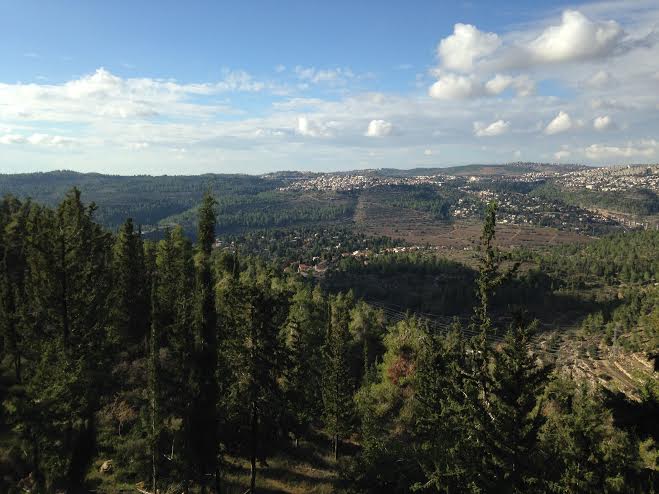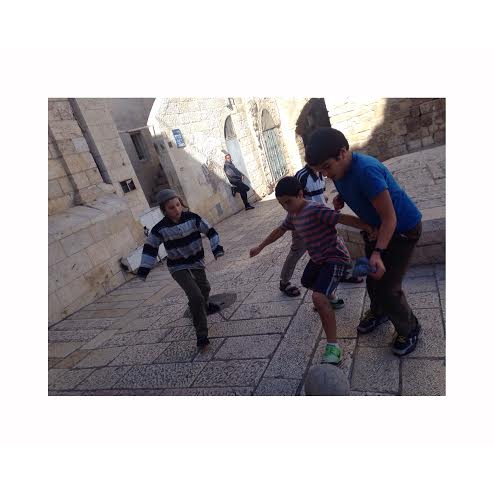by Holly Thomas. All images by iPhone, copyright Holly Thomas [Twitter, Instagram: @HolstaT]
Jerusalem is in our consciousness from earliest childhood. But it’s a place that, for many of those who have never been, occupies the same mental space as fairy tales. Something which we’ve known of since we can remember, but can’t imagine being real. I’m not religious, and in Jerusalem you are met at every turn with things which described second-hand would sound preposterous. But when you’re there, the history of it all is immediate, indisputable, and alive.
It helps that so much architecture is – against all odds – beautifully preserved. Jerusalem has amplified since the days of crusades and crucifixions and the new city and West Bank stretch far, swaddling villages and towns, including Bethlehem. But step inside the Old City, home to the Western Wall, the Church of the Holy Sepulchre, and the site of the Last Supper, and you’re plunged into another world.
So, you should go to the Old City first
The Old City stands east of the (busy) Hebron Road, which runs through the centre of Jerusalem. The sections of Hebron Road which north and south of the West Bank, and through Jerusalem, are barred to green – Palestinian – license plates. Israeli license plates are yellow. Jerusalem feels safe, and as a traveller, you have nothing to fear.
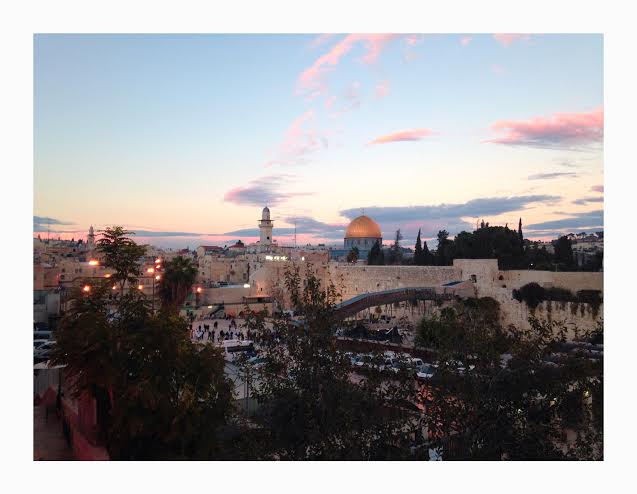
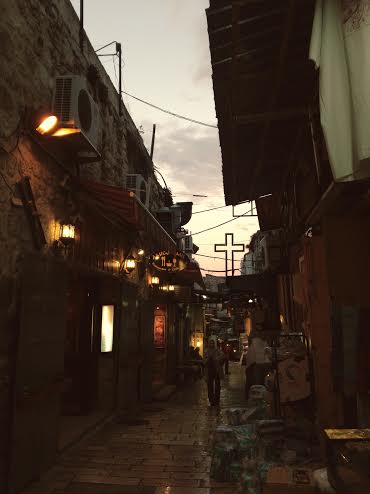 The first thing you see when you walk through Jaffa Gate on the Western side of the city is King David’s Tower, which was built (bar an extension courtesy of the Turks) by King Herod – a crack architect, it turns out. Every night the sand-coloured building plays host to a light show which tells the 3000-year story of Jerusalem accompanied by music. It’s a beautiful show, well worth spending 30 minutes on to get a sense of the city’s roots.
The first thing you see when you walk through Jaffa Gate on the Western side of the city is King David’s Tower, which was built (bar an extension courtesy of the Turks) by King Herod – a crack architect, it turns out. Every night the sand-coloured building plays host to a light show which tells the 3000-year story of Jerusalem accompanied by music. It’s a beautiful show, well worth spending 30 minutes on to get a sense of the city’s roots. 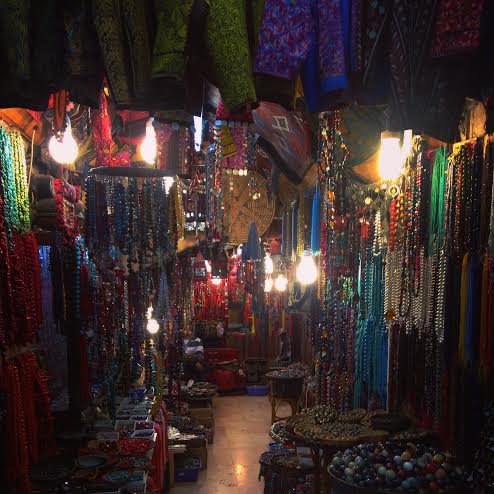 It’s a tiny place but the concentration of marvellous things is so high that I couldn’t possibly recommend them all in this space. So here are a few unmissables. Everything is so close together that I promise you’ll discover your own in-between hunting these out:
It’s a tiny place but the concentration of marvellous things is so high that I couldn’t possibly recommend them all in this space. So here are a few unmissables. Everything is so close together that I promise you’ll discover your own in-between hunting these out:
The Western (wailing) Wall
For obvious reasons, this is the only area of the Old City which you must pass though some security to enter. Standing against a backdrop of the Mount of Olives, and with the Call to Prayer echoing regularly just next door, it is plain why this is a site of high emotion for so many. But it’s so worth seeing. Dress conservatively – knees covered – and behave with respect for the three thousand years of history the wall represents. 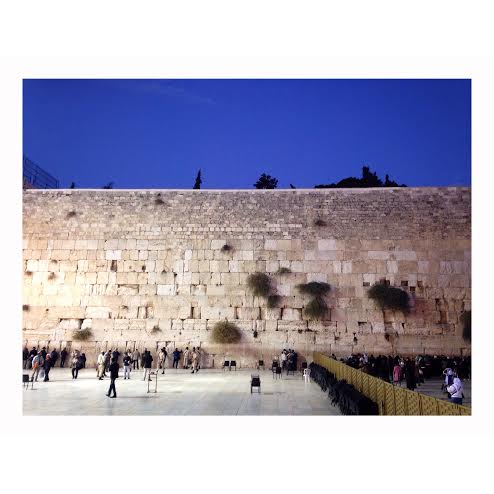
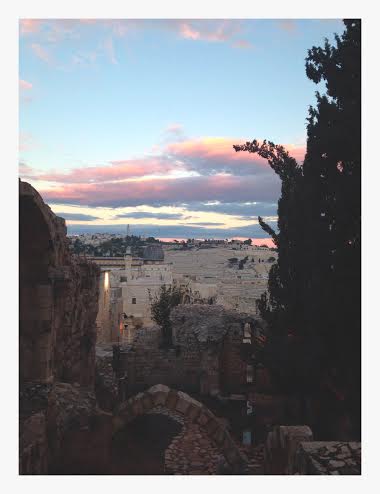
The Cenaculum of the Last Supper
This is just down the street from the Western Wall, but for the full experience, head to the Church by way of the Stations of the Cross. These days the path is lined with shops and stalls, but there are still lasting signs, such as the Church of Simon, built on the spot where its namesake apparently helped a fatigued Jesus make his final steps.
A few treasures in the Church
The first thing you see when you Church of the Holy Sepulchre is the stone of the anointing, where Jesus is said to have been prepared for burial. To reach the site of the crucifixion itself, you must pass through a small, dark archway and climb a short winding staircase. There you’ll find the Alter of the Crucifixion, and next to it a hole in the floor covered by glass, exposing the bare ground below. Be prepared for a crowd, particularly in the evening and on Sunday. 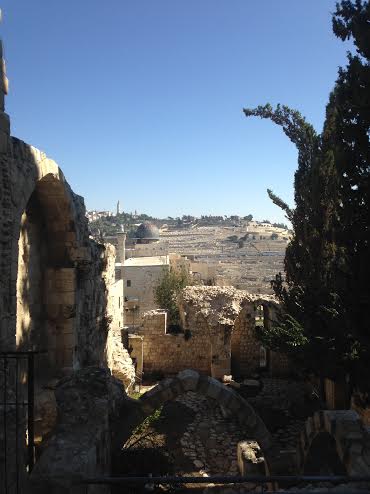 Descend the other side, and you’ll see what looks like a sensationally ornate hut – that’s the Aedicule, which contains the Holy Sepulchre itself. The Aedicule has two rooms, one holding the Angel’s Stone, which is believed to be a fragment of the large stone that sealed the tomb, and another holding the tomb itself. Be prepared to queue for entry.
Descend the other side, and you’ll see what looks like a sensationally ornate hut – that’s the Aedicule, which contains the Holy Sepulchre itself. The Aedicule has two rooms, one holding the Angel’s Stone, which is believed to be a fragment of the large stone that sealed the tomb, and another holding the tomb itself. Be prepared to queue for entry.
The roof
This was my favourite place in Jerusalem. I was lucky in that I met someone who showed me how to get up there, but it wouldn’t be hard to find someone to point the way (you might have to be prepared to buy a trinket off one of the street stall vendors). Go at dawn or sunset, if you can. Unlike the walls walk, the roof is never closed.
Away from the bustle of the tourist-jammed streets below, this is where you’ll feel you’re in the Jerusalem the Romans found. Schoolboys park their bikes up there, people hang their washing (oddly like Edinburgh, Jerusalem is stacked in layers, house atop house atop street), and you can quite literally see everything from a perspective you’d never otherwise have known existed.
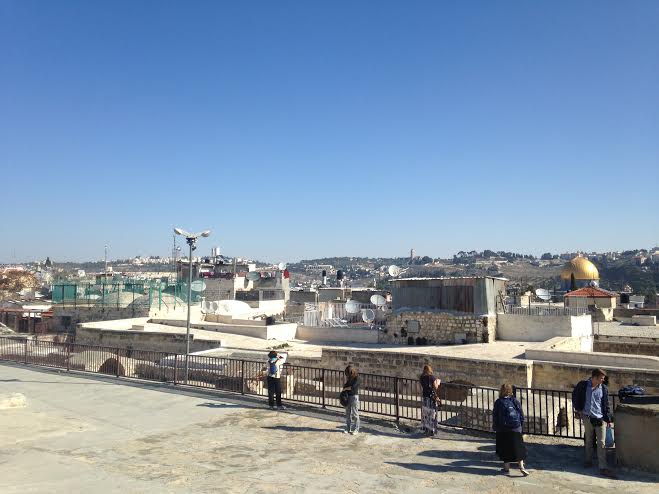
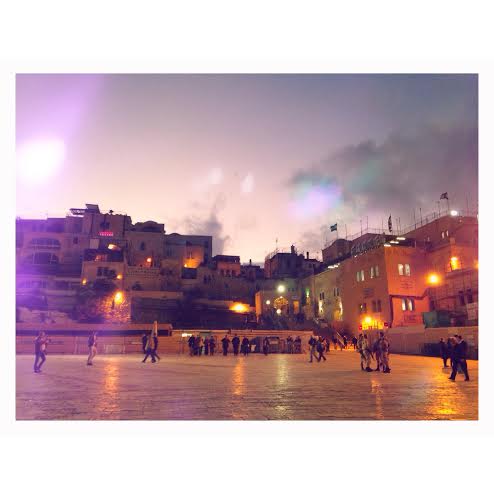 Don’t forget the new city
Don’t forget the new city
I’ll admit I biased my time in Jerusalem pretty heavily in favour of “old stuff”, but there’s a whole lot beyond that to see if you fancy a dip into the 21st century between biblical ruins. Try the market, unlikely jazz cafes in the evenings, and the adorable hipster quarter. There are a few decent clubs, but if you want a wild one, go to Tel Aviv (about 40 minutes in a taxi). And don’t be perturbed by all the teenagers with guns – they’re in the middle of their compulsory military service.
Further afield
The Holocaust Museum
If you only have time for one excursion beyond Jerusalem’s city centre, make it to the Holocaust Museum. It was the first stop on our trip, and it lingered in the back of our minds until long after we’d left. The building is stark, and beautiful, clean lines which stand in the midst of quiet serpentine grounds dotted with trees, overlooking the valley. Entry is free, but children under ten years old aren’t permitted inside.
Set at least 4 hours aside for it if you can. If you have a day spare, this could fill it. There is a staggering amount to see, plus over 11 hours of video footage playing throughout the main exhibition alone. It’s all riveting, beautifully presented, and will tug powerfully at your heart. The extraordinary breadth and delicacy of the subject matter is handled exquisitely, covering the historical prelude to the Shoah, the Nazi’s rise to power and gradual attrition of Jewish liberties, and at last the gruesome unfolding of the Holocaust across Europe in horrifying detail. 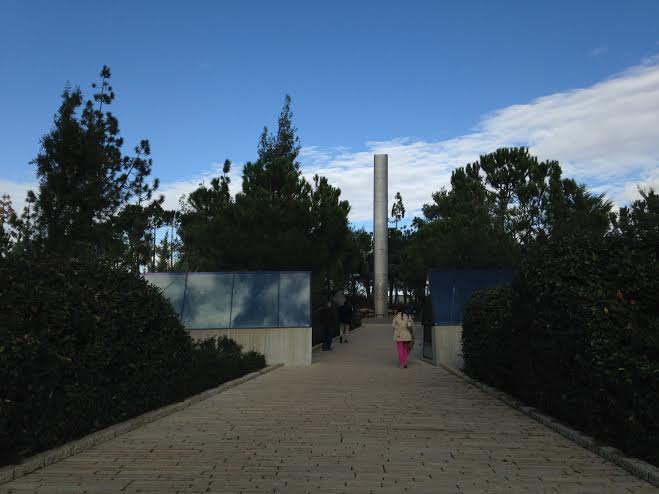 The collection is acutely personal, packed with details which will knock your breath out. Like mementoes from the ghetto, set next to a video interview describing first-hand the sight of emaciated bodies littering the street, no clothes spare to protect their final modesty. There are letters flung through train windows bidding farewells which were never known, and charred shoes from the death camps piled in a heap on the floor. There is more to take in than you possibly could in one viewing, but once you start you will continue, wrapt, until you are saturated. Make sure that you leave time at the end for the children’s memorial, a cave in the grounds with candles reflected to infinity on its mirrored walls. Also, the Avenue of the Righteous Among The Nations, where you’ll find a tree dedicated to Oskar Schindler and his wife Emilie.
The collection is acutely personal, packed with details which will knock your breath out. Like mementoes from the ghetto, set next to a video interview describing first-hand the sight of emaciated bodies littering the street, no clothes spare to protect their final modesty. There are letters flung through train windows bidding farewells which were never known, and charred shoes from the death camps piled in a heap on the floor. There is more to take in than you possibly could in one viewing, but once you start you will continue, wrapt, until you are saturated. Make sure that you leave time at the end for the children’s memorial, a cave in the grounds with candles reflected to infinity on its mirrored walls. Also, the Avenue of the Righteous Among The Nations, where you’ll find a tree dedicated to Oskar Schindler and his wife Emilie.
Out of town
Go to the Jordon Valley. Sinking 400 kilometres below sea level is like arriving onto another planet, conversely a drier, hotter, desert Mars-like planet, dotted with thin donkeys and ibexes. If you can, pass Jericho on your way to the beach. It’s one of the oldest cities in the world, dating back 11,000 years. It was Alexander the Great’s private estate, and King Herod later leased it from Cleopatra (who received it from Mark Anthony as a gift). Even if you just drive past it, it’s worth planning your West Bank route around. And you must an hour or two aside for a trip up to Herod’s fortress on Masada. 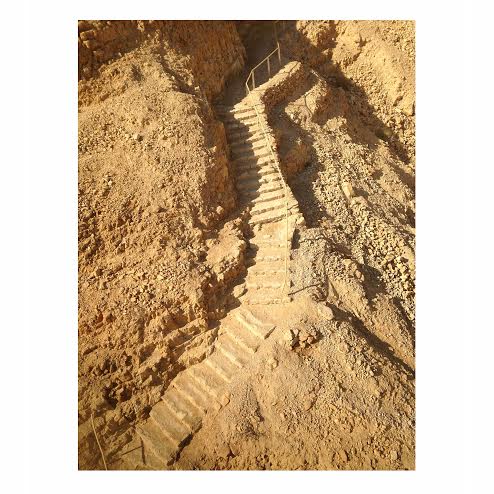
Masada (Herod’s fortress)
You can either climb or take a ski lift up the mountain to see this spectacular evidence of Herod’s final paranoia (he built the fortress in -reasonable – anticipation of a rebellion by his long-suffering subjects). The view is unparalleled, and to Herod’s credit as a mad architect, the fortress remains in fantastic condition millennia later. 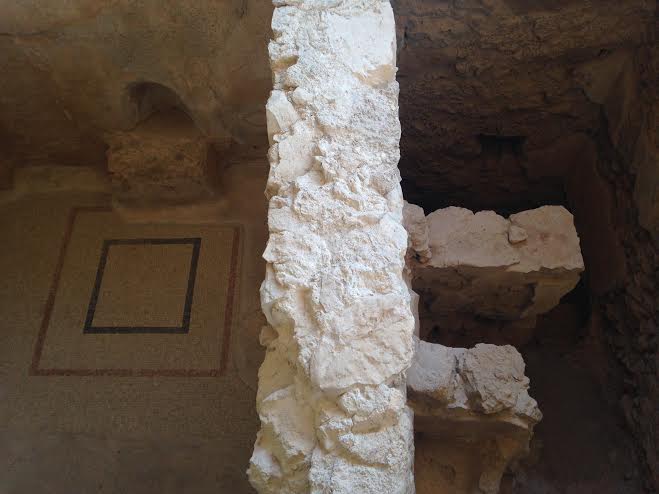 See if you can spot the lockers in the wall next to the old indoor swimming pool (really). Also remember to walk right up to the edge (it’s obvious where that is once you’re up there) and shout something into the canyon for a wicked echo.
See if you can spot the lockers in the wall next to the old indoor swimming pool (really). Also remember to walk right up to the edge (it’s obvious where that is once you’re up there) and shout something into the canyon for a wicked echo. 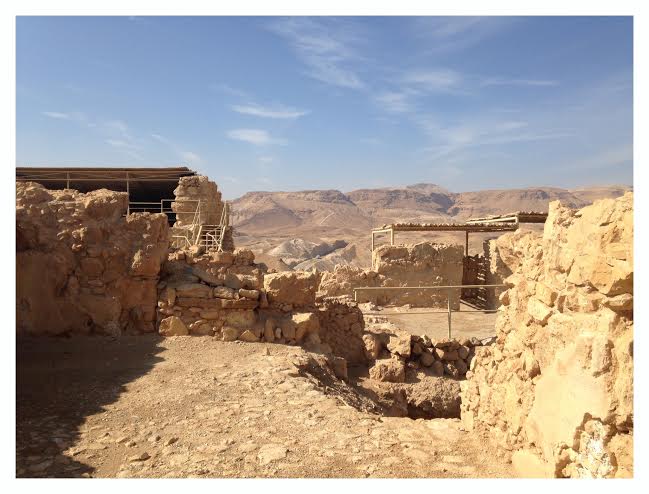
The beach
The Dead Sea calls for a couple of hours at most. Spend longer and you’ll get bored, but a dip and a splash is uplifting and delightful. It’s smaller than you’d imagine – so much so that iPhones became confused, and O2 welcomed me to Jordon (which was visible through the mist which hung over the water). The beaches are concurrently small, dotted along the shore, and have a vaguely dated resort-like feel. A hint of Butlins lingers over the deserted playground behind the beach huts. The water, though, is magical. Slather yourself in thick mud, wait for it to dry, and then wade in to rinse it off. You *really* can’t sink, and Jesus’s feats suddenly appear less fantastical as you realise the impossibility of not floating. Lie on your back and you feel supported, safe, and importantly, warm. 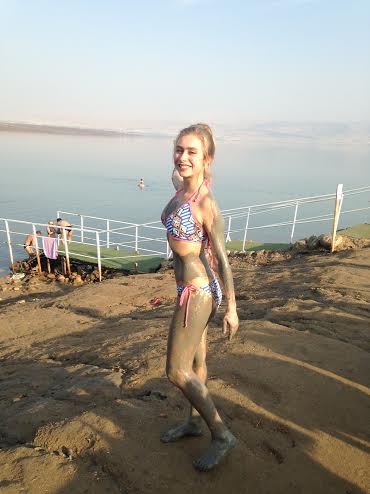
Where to stay
The Arthur Hotel has resided comfortably on Tripadvisor Jerusalem’s top five list for some time now, and it’s instantly clear why. This boutique hotel – just 15 minutes’ walk (or a three minute tram ride) from the Old City maintains an intimate, private atmosphere, tucked down a side street of one of the most buzzing neighbourhoods in Jerusalem. The service is lovely – you hardly notice it’s there until you need something, at which point help materialises immediately. The rooms have an individual, luxurious feel, and are decorated with obvious care, a world away from the homogeny of so many elite chain hotels. Breakfast, served as a daily buffet from 7am-10am, is delicious, with regional delicacies such as shakshuka, grilled vegetables, and fish offered alongside more familiar pastries, cereal and fruit salad. For explorers who have been too busy gaping at their surroundings to stop for lunch during the day, there is also a ‘happy hour’ in the restaurant from 5pm-7pm, where you can enjoy snacks and sandwiches with your complimentary wine.
Final note
Jerusalem is a complicated place, no mistake. There isn’t space here to dwell on the implications that one of the holiest sites on earth, sacred to so many, is perplexed on all sides by strife. There is pain in Jerusalem, both older than the ruins, and newer than the Hebron road. If you ask why it isn’t advised to go to the Mount of Olives on a particular day (this is sometimes the case, though visitors really are the safest people in the city), the answer you get will vary hugely depending on who you ask. Wounds are deep, and though I fell for Israel heart and soul, I think it is necessary to stay mindful of your surroundings. This shouldn’t be a deterrent – on the contrary, it should be an incentive to go to this important and fascinating country. Just be respectful and cautious with your opinions when you are talking to the people for whom it is home. “It sounds silly, to call a four-day trip ‘life changing’,” said my friend on the plane back. “But it was.”

